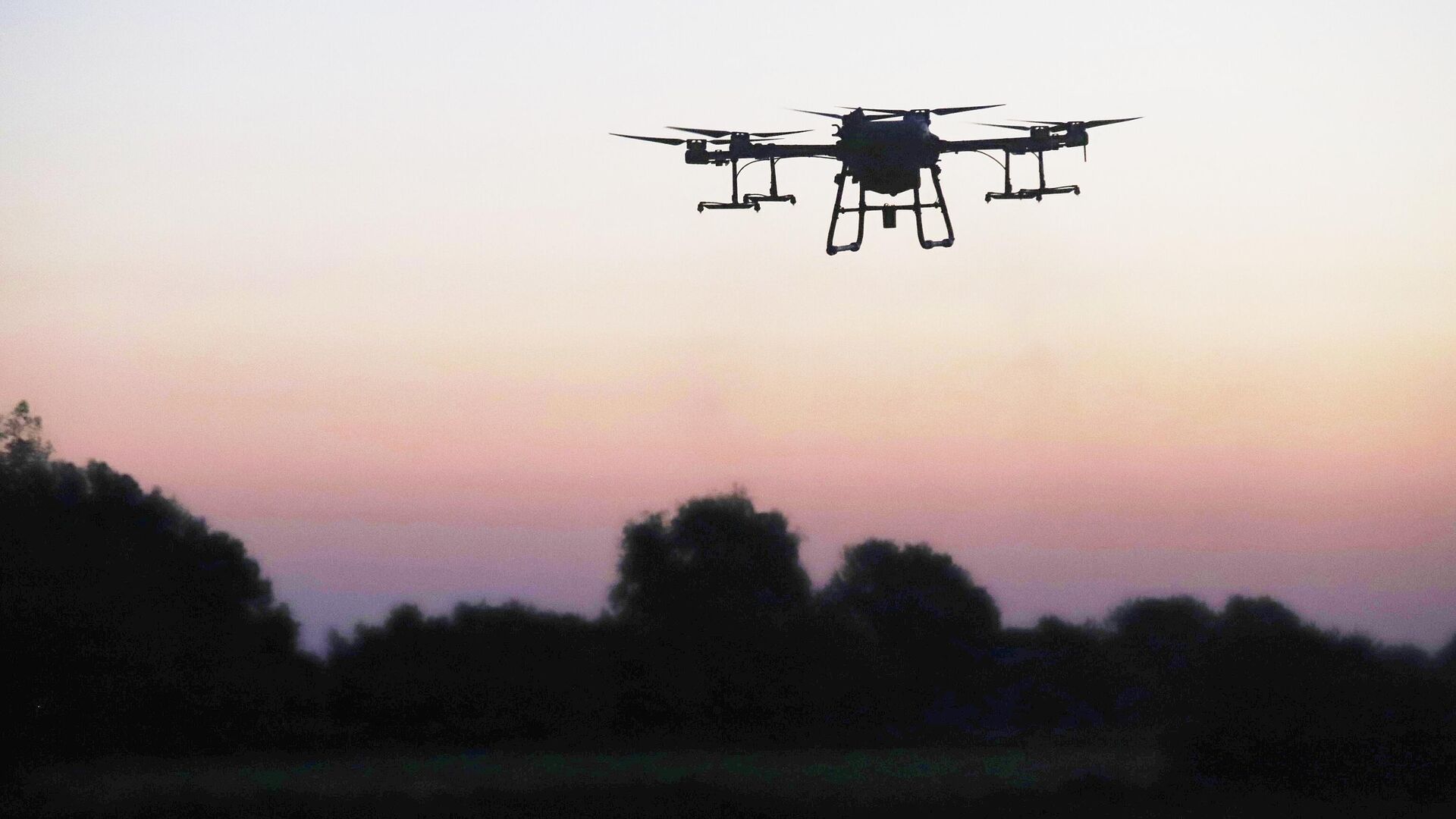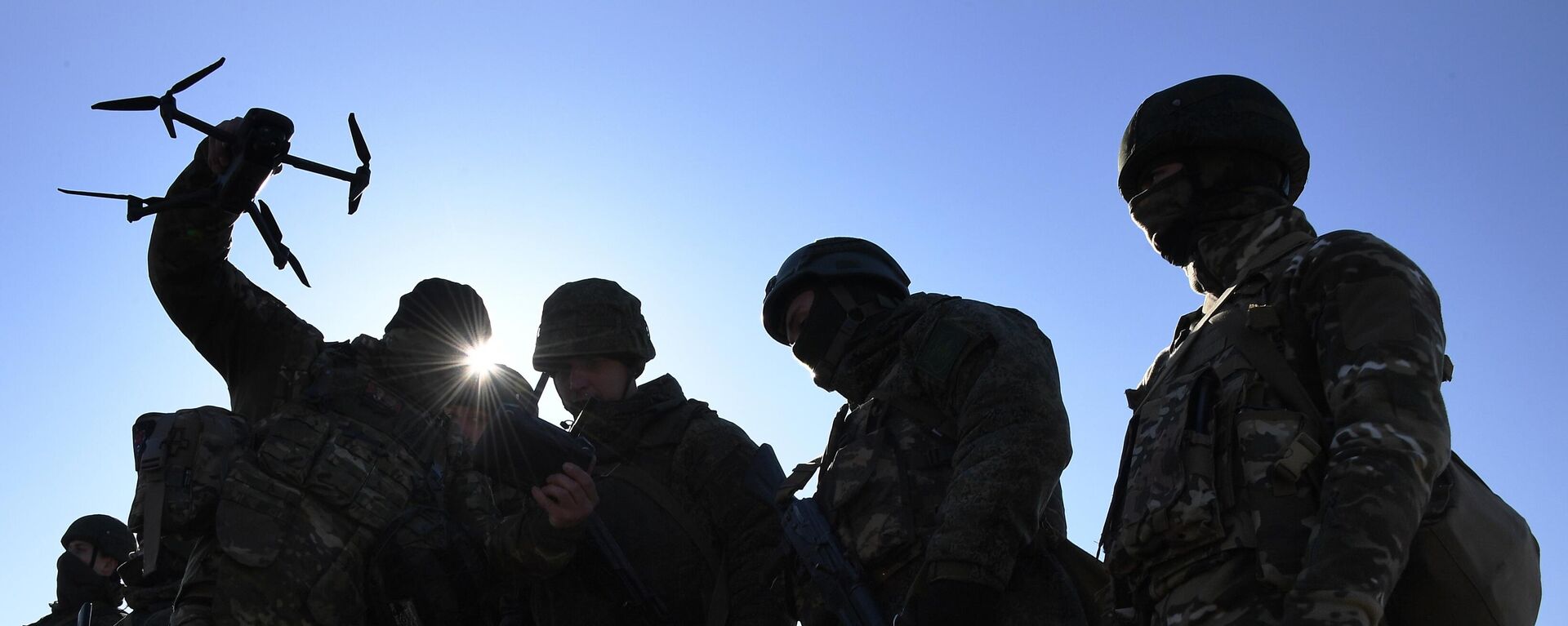Special Delivery: Sukhoi Design Bureau Teases Super-Heavy Cargo Drone
14:29 GMT 24.02.2024 (Updated: 14:44 GMT 24.02.2024)

© Sputnik / Denis Abramov
/ Subscribe
In addition to playing a prominent, if not essential role in modern warfare, unmanned aerial, sea and ground-based vehicles are seen as an important new way to deliver cargoes across long distances, including to otherwise impassible locations.
Sukhoi Design Bureau is working on ambitious concept – a super-heavy VTOL quadcopter (or more accurately ‘octocopter’) drone design with the ability to autonomously deliver up to 300 kg worth of cargo across a 500 km radius.
In a press release, Sukhoi holding company Rostec announced that the designer’s specialists were busy working on a “fundamentally new” heavy drone system, with the UAV, tentatively named the BTS-VAB (Russian acronym for ‘Off-airfield Unmanned Transport System), characterized as a vehicle that “does not require specially prepared sites and airfield infrastructure for takeoff and landing.” That, it is hoped, will make it an ideal solution for solving an array of logistics issues, including the delivery of cargoes to hard-to-reach populated areas, and other specialized tasks.
Initial flight testing of the cargo UAV has been conducted and proved successful, with trials including checking of control algorithms, takeoff, hovering and landing systems.
“Our unmanned aircraft combines the advantages of an airplane with the capabilities of a helicopter,” BTS-VAB lead designer Evgeny Rubtsov said.
“The hybrid propulsion unit includes an electric lift propulsion system and a piston propulsion engine. Vertical takeoff and landing is carried out by lifting engines located on wing beams. After takeoff, the gasoline engine comes online. The wing [design] increases fuel efficiency, and thanks to the possibility of vertical take-off, the construction of expensive airfield infrastructure and runways is not required,” the engineer explained.
The drone is being developed for fully automatic operations across the spectrum of operations, from take-off, to flight, to landing. Human intervention is possible when necessary, including to change the heavy UAV’s route.
The current testing stage is centered around the drone’s basic design and key technologies, with next steps including development and testing of VTOL algorithms, and after that, organization of production.
“The project is focused on public and private structures in the transport services market. The drone will be able to carry out logistics, research and other tasks of any complexity in various regions of Russia, including its most inaccessible areas,” Rostec said.
Sukhoi’s owner, United Aircraft Corporation, published unique footage of the super heavy drone’s testing to its official Telegram channel, offering hints on the drone’s massive scale, showing the operation of its engines and takeoff, hovering and maneuvers mid-air.
The BTS-VAB’s design features an airplane-style small case t-shaped frame and wingspan, on top of which four girders, fitted with two helicopter-style engines apiece, are attached. Test footage shows that the engines feature an alternating clockwise/counterclockwise rotation configuration. The sound made by the drone in flight is reminiscent to that of a large mid-20th century turboprop plane, or an impossibly gigantic beetle.
The BTS-VAB isn’t the only super-heavy cargo drone Sukhoi has up its sleeve. In 2022, the company teased the Atlas, a prospective heavy cargo drone with an 11.2 meter wingspan, a 500 km flight radius, a cruising speed of up to 250 km per hour, and the ability to carry up to 1.5 meters of cargo. The current state of that project, developed with collaboration from the Moscow Institute of Physics and Technology, is unknown.
Russian aviation experts believe heavy transport drones will reduce delivery costs and make it possible to send crucial supplies to the far-flung corners of the Eurasian nation. Naturally, military use cases are also a possibility, as they make it possible to transport supplies and ammunition more cheaply and more safely.
In terms of civilian uses, the creation of air-based drone delivery networks of the future will require the creation of the appropriate legislative framework, and would likely be possible only after the conclusion of the crisis in Ukraine, with Russian authorities introducing severe restrictions on the operation of UAVs in connection with the danger of Ukrainian drone attacks.
Back in 2019, Sukhoi unveiled another heavy drone, the massive Sukhoi S-70 Okhotnik-B (lit. ‘Hunter-B’) stealth UAV wingman concept. Sukhoi plans to begin the introduction of the 25,000 kg UAV into service with the military sometime later this year.




